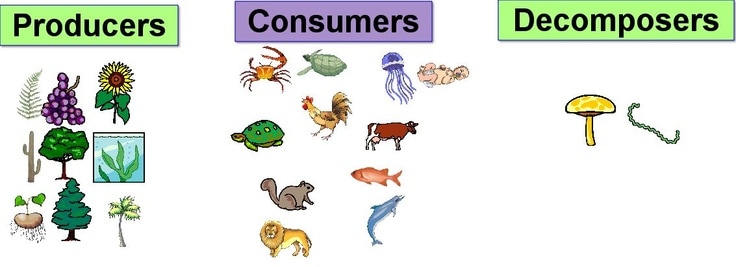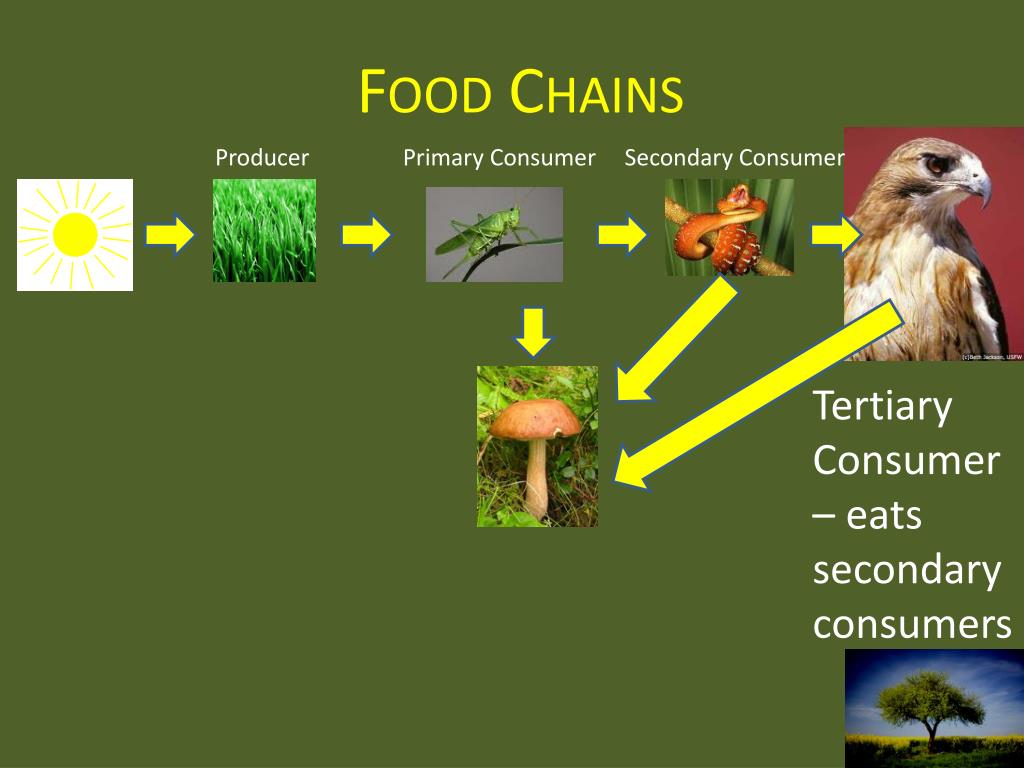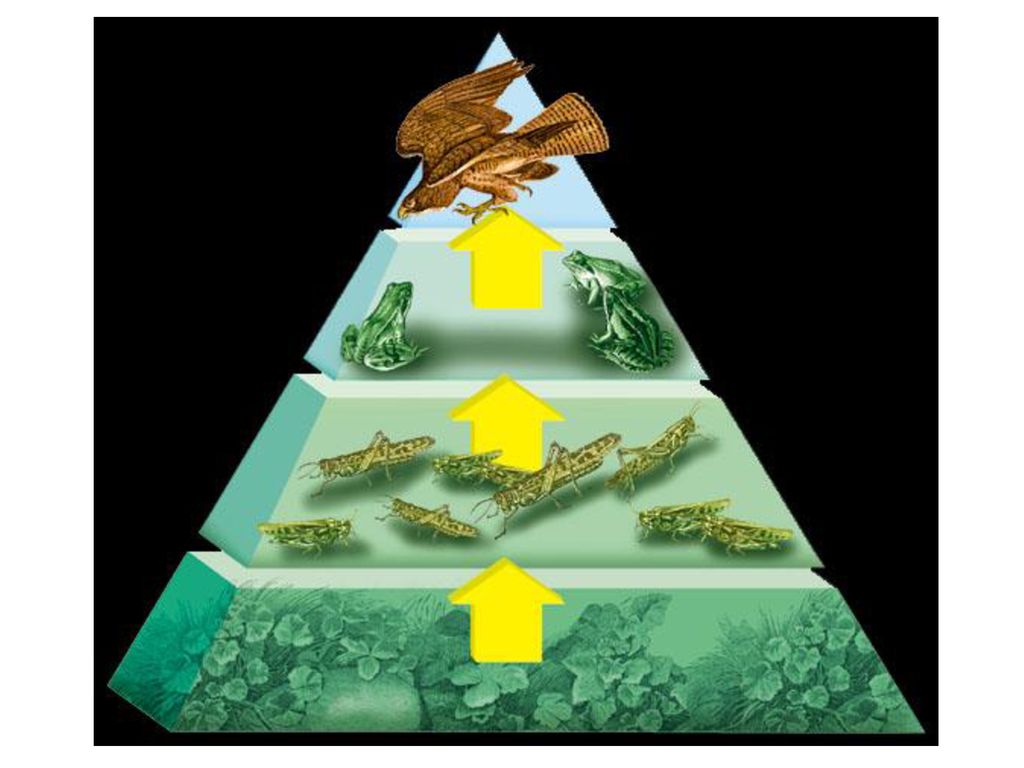Food Chains and Food Webs Biology Diagrams A food chain presents a unique, connected path of energy flow in an ecosystem, whereas the food web explains how food chains overlap. Both food chains and food webs, shares three types of organisms in a food chain: producers, consumers and decomposers. Explore more: Difference Between Food Chain And Food Web. Producers. Organisms that can

The four levels in this food chain are primary consumers, secondary consumers, tertiary consumers, and finally decomposers or phytoremediators. If you have any questions, don't be shy, and make sure to ask one in our comment section below. Tertiary Consumers - Tertiary consumers feed on secondary such as a pack of wolves. Caro says Tertiary consumers often occupy the top trophic level, and so are predated by no other animals; in this case they are called "apex predators". However, when they die their bodies will be consumed by scavengers and decomposers. Sometimes in a food chain there is an apex predator above the tertiary consumer.

The Environmental Literacy Council Biology Diagrams
Tertiary consumers exhibit certain characteristics that distinguish them from other members of the food web: 1. Position in the Food Chain: Tertiary consumers are positioned at the top of the food chain, sharing a trophic level with apex predators. 2. Predatory Nature: They are carnivores that primarily feed on other animals. 3. A tertiary consumer is a fourth trophic level after producers, primary consumers, and secondary consumers. Tertiary consumers eat primary and secondary consumers as their main source of food. These organisms are sometimes referred to as apex predators as they are normally at the top of food chains , feeding on both primary and secondary consumers. The third trophic level in the food chain, known as tertiary consumers, plays a crucial role in ecosystems by consuming secondary consumers and converting their energy into biomass. These apex predators hold primary consumers in check, ensuring balance and stability within the food web. From majestic lions preying on zebras in the African savanna to great white sharks hunting seals in the

Importance of Tertiary Consumers. Tertiary consumers are more than just predators; they are vital components of a healthy ecosystem. Population Control: They regulate the populations of secondary consumers, preventing any one species from becoming dominant and disrupting the food chain. Ecosystem Stability: They contribute to the overall stability and health of the ecosystem by maintaining a

Tertiary Consumer: Definition, Examples and Functions Biology Diagrams
Producers are the first step in a food chain because they create their own energy. Primary consumers are the second step, and secondary consumers are the third. This makes a tertiary consumer the fourth step in the food chain because they consume secondary consumers for energy. Tertiary consumers can be: herbivores — organisms that eat plants
